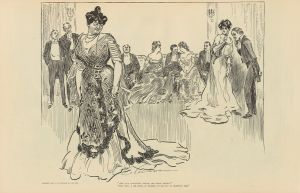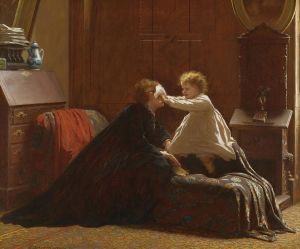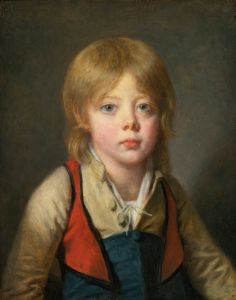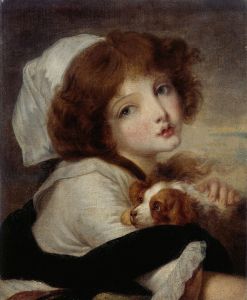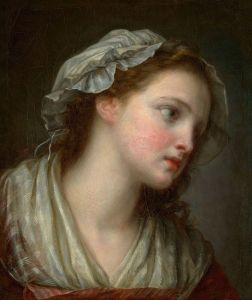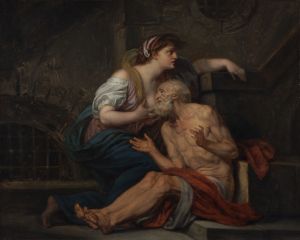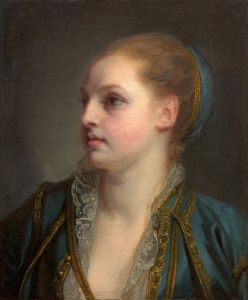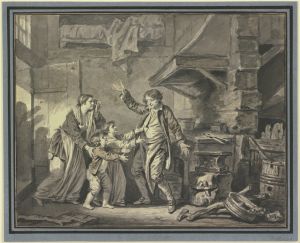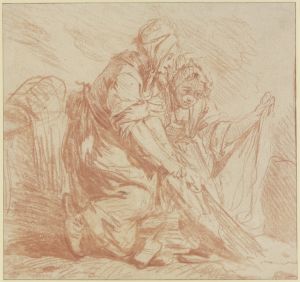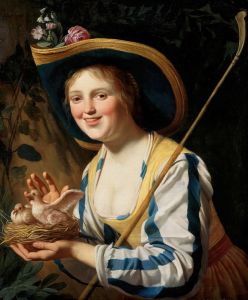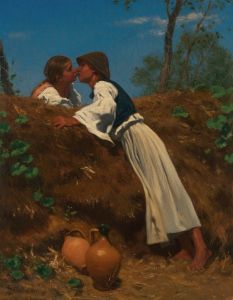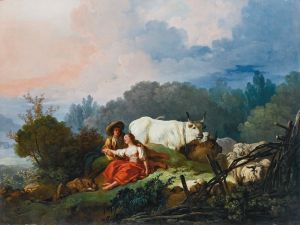
Jeune berger qui tente le sort pour savoir s’il est aimé de sa bergère
A hand-painted replica of Jean-Baptiste Greuze’s masterpiece Jeune berger qui tente le sort pour savoir s’il est aimé de sa bergère, meticulously crafted by professional artists to capture the true essence of the original. Each piece is created with museum-quality canvas and rare mineral pigments, carefully painted by experienced artists with delicate brushstrokes and rich, layered colors to perfectly recreate the texture of the original artwork. Unlike machine-printed reproductions, this hand-painted version brings the painting to life, infused with the artist’s emotions and skill in every stroke. Whether for personal collection or home decoration, it instantly elevates the artistic atmosphere of any space.
"Jeune berger qui tente le sort pour savoir s’il est aimé de sa bergère" (Young Shepherd Trying His Luck to See if He is Loved by His Shepherdess) is a painting by the French artist Jean-Baptiste Greuze. Greuze, born on August 21, 1725, in Tournus, France, was a prominent painter known for his genre scenes, which often depicted sentimental and moralizing themes. He was active during the 18th century and became a significant figure in the Rococo and early Neoclassical movements.
The painting "Jeune berger qui tente le sort pour savoir s’il est aimé de sa bergère" is a fine example of Greuze's ability to capture intimate and emotional moments in everyday life. The artwork depicts a young shepherd who is attempting to divine whether he is loved by his shepherdess. This scene is imbued with a sense of innocence and pastoral charm, characteristic of Greuze's work.
Greuze's technique in this painting showcases his skill in rendering textures and expressions. The young shepherd is portrayed with a tender and hopeful expression, his eyes focused intently on the object of his divination. The shepherdess, on the other hand, is depicted with a gentle and somewhat coy demeanor, adding to the narrative tension of the scene. The background of the painting features a bucolic landscape, enhancing the pastoral theme and providing a serene setting for the interaction between the two figures.
Jean-Baptiste Greuze was known for his meticulous attention to detail and his ability to convey complex emotions through his subjects. His works often included moral lessons or depicted scenes of everyday life that resonated with the viewers of his time. "Jeune berger qui tente le sort pour savoir s’il est aimé de sa bergère" is no exception, as it captures a moment of youthful curiosity and romantic longing.
The painting reflects the Rococo style's emphasis on lightness, elegance, and natural forms, while also hinting at the emerging Neoclassical interest in more serious and moralistic themes. Greuze's work was highly regarded during his lifetime, and he enjoyed considerable success and patronage. However, his reputation experienced fluctuations over the years, with periods of both acclaim and criticism.
Today, Jean-Baptiste Greuze's paintings are appreciated for their technical skill and emotional depth. "Jeune berger qui tente le sort pour savoir s’il est aimé de sa bergère" remains a testament to his ability to capture the subtleties of human emotion and the beauty of everyday life. The painting is part of the collection of the Louvre Museum in Paris, where it continues to be admired by art enthusiasts and scholars alike.
In summary, "Jeune berger qui tente le sort pour savoir s’il est aimé de sa bergère" is a notable work by Jean-Baptiste Greuze that exemplifies his talent for depicting intimate and emotionally charged scenes. The painting's pastoral setting, detailed execution, and expressive characters make it a significant piece within Greuze's oeuvre and a valuable example of 18th-century French art.






